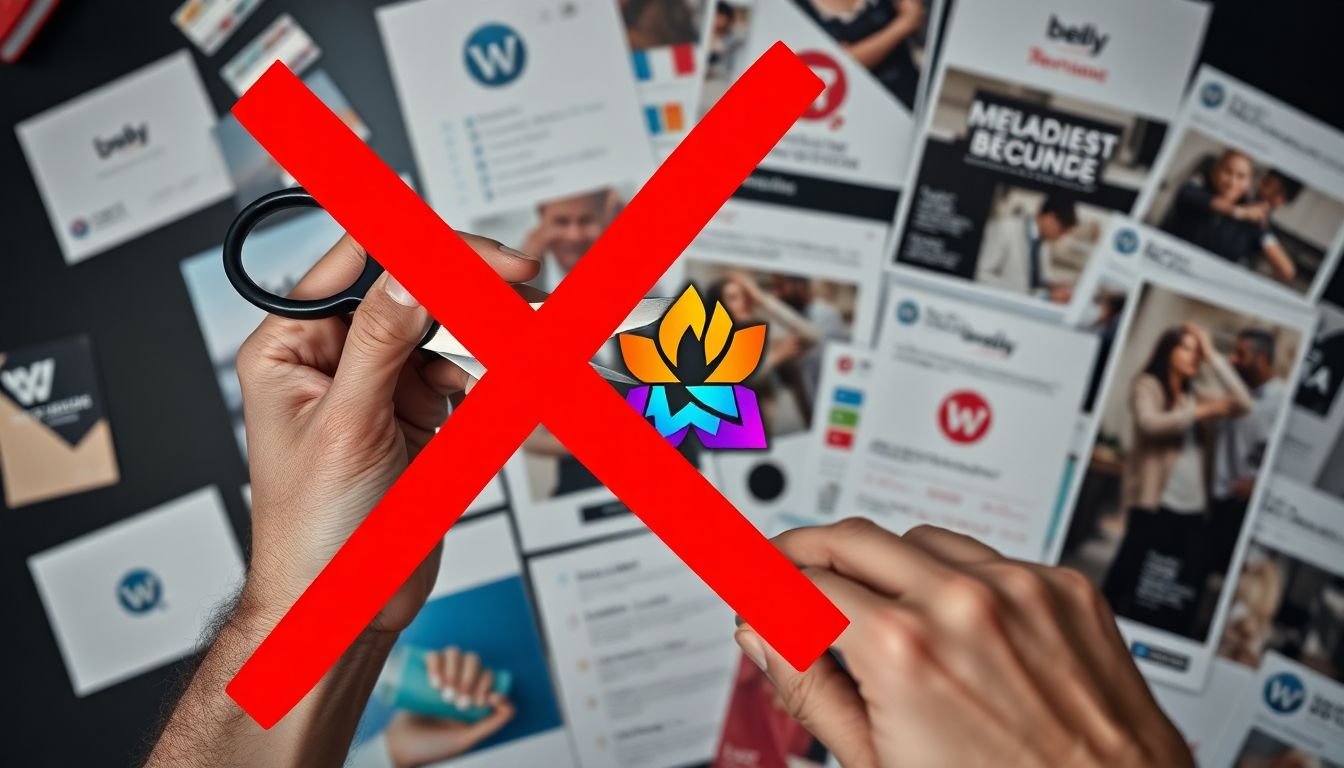
Table of Contents
Have you ever wondered why some of the world’s most iconic brands, like Apple or Google, periodically undergo a facelift, changing their logos, color schemes, or even their entire brand identity? The answer lies in the power of rebranding, a strategic marketing investment that can revitalize a brand’s image, appeal to new audiences, and drive business growth. However, while the benefits of rebranding are undeniable, the process often comes with a hefty price tag that extends far beyond the initial design costs. In this comprehensive guide, we delve into the often overlooked ‘hidden costs of rebranding’ to help you create a robust brand refresh budget and ensure your marketing investment yields the desired returns.
First, let’s address the elephant in the room: rebranding is not cheap. According to a study by the Rebranding Research Project, the average cost of a rebrand can range from $100,000 to $1 million for large corporations, with smaller businesses spending anywhere from $20,000 to $100,000. But here’s the catch
- these figures only scratch the surface of the total rebranding costs. Hidden expenses can quickly balloon your budget, turning a seemingly manageable project into a financial nightmare.
So, why are these hidden costs so prevalent, and why aren’t they more widely discussed? The answer lies in the complex nature of rebranding, which involves much more than just designing a new logo. It’s a comprehensive overhaul that touches every aspect of your business, from your website and marketing materials to your company culture and employee training. Each of these touchpoints comes with its own set of costs, and without a clear understanding of the rebranding process, it’s easy to overlook or underestimate these expenses.
But fear not, dear reader! This article is here to shed light on these hidden costs and empower you to create a brand refresh budget that leaves no stone unturned. By the end of this guide, you’ll have a clear understanding of the financial implications of rebranding, enabling you to make informed decisions about your marketing investment. We’ll explore the often overlooked costs of rebranding, provide real-life examples, and offer practical tips on how to manage your budget effectively. So, if you’re considering a brand refresh or simply curious about the financial intricacies of rebranding, read on to discover the hidden costs that could make or break your marketing strategy.
Unveiling the Hidden Expenses: A Comprehensive Guide to Rebranding Costs and Budgeting for a Brand Refresh
Embarking on a rebranding journey can be an exhilarating yet daunting task, as it often comes with a price tag that extends far beyond the initial logo design or new website. Unveiling the Hidden Expenses: A Comprehensive Guide to Rebranding Costs and Budgeting for a Brand Refresh aims to shed light on the often overlooked expenses that can quickly add up, ensuring you’re well-equipped to navigate the financial landscape of a brand refresh. From legal fees to protect your new identity to the cost of updating marketing materials and merchandise, we’ll delve into the intricacies of rebranding costs. We’ll also explore strategies to budget effectively, helping you to allocate resources wisely and avoid any nasty financial surprises. After all, a successful rebrand is about more than just a fresh look; it’s about a sustainable, strategic approach that sets your business up for long-term growth. So, let’s roll up our sleeves, dive into the numbers, and make your brand refresh a financial success story.
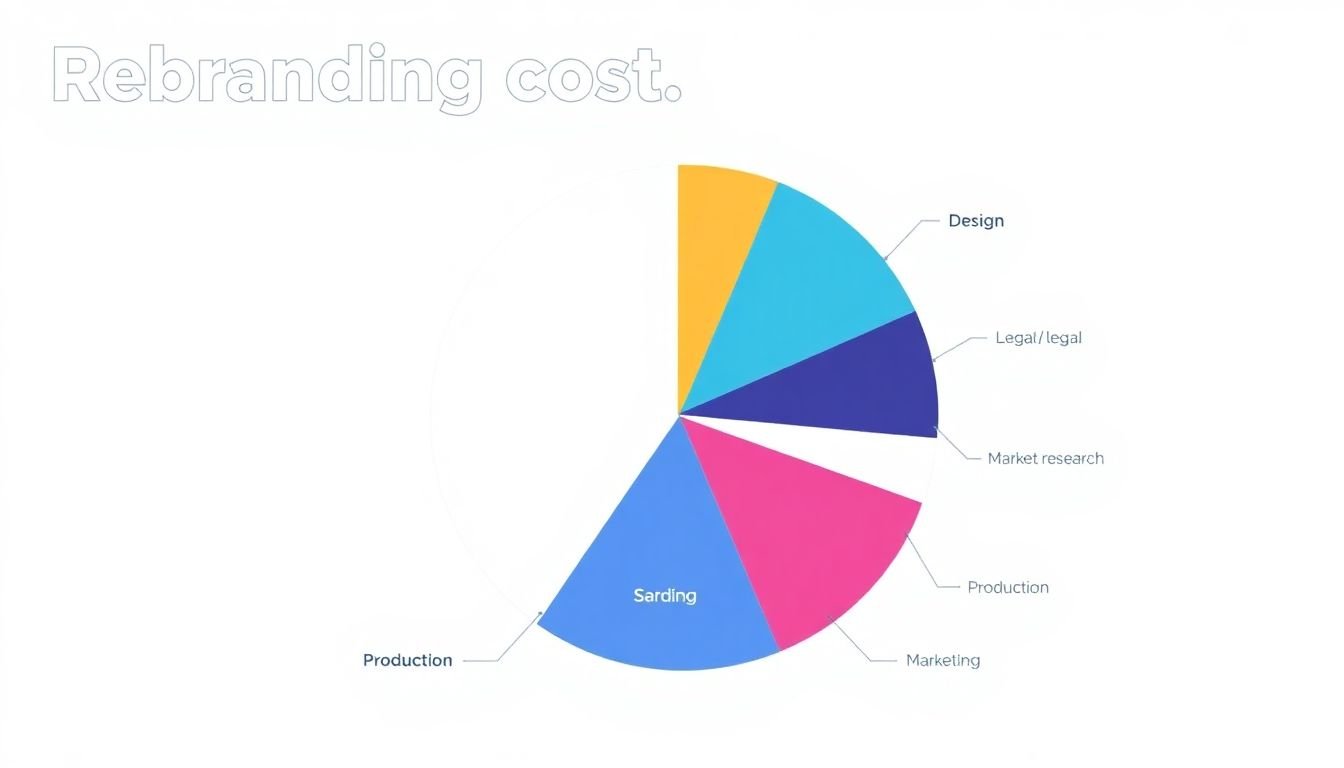
Understanding Rebranding Costs: A Holistic Approach
Embarking on a rebranding journey is a strategic move that can significantly impact an organization’s identity, perception, and market position. However, it’s crucial to understand that rebranding costs extend far beyond the immediate financial investments. A holistic approach to understanding these costs involves a 360-degree view that encompasses monetary expenses, time and resource allocation, and potential risks.
The most apparent rebranding costs are the financial ones. These include professional services such as branding agencies, designers, and consultants. Other direct costs may involve legal fees for trademarking a new name or logo, printing new marketing materials, and updating digital platforms. However, these expenses often pale in comparison to the less tangible, but equally important, costs.
Time and resources are significant investments in any rebranding project. This includes the time spent by employees in focus groups, workshops, and training sessions to understand and implement the new brand. Resources may involve reallocating staff to work on rebranding tasks, or even hiring new talent to fill skill gaps. The opportunity cost of these redirected resources should also be considered.
Potential risks are another critical aspect of rebranding costs that are often overlooked. These can include market backlash, confusion among customers, or even legal challenges if the new brand infringes on existing trademarks. The risk of failure, both in terms of market acceptance and internal implementation, should be carefully evaluated.
Therefore, a holistic approach to understanding rebranding costs is not just about adding up invoices, but about weighing these various factors and their potential impacts. It’s about asking tough questions like: How will this rebranding affect our employees’ workload and morale? What are the potential market reactions? What are the long-term benefits and risks? By considering all these aspects, organizations can make informed decisions about their rebranding journey, ensuring that the costs are not just financial, but also strategic and sustainable.

Market Research: The Foundation of Your Rebranding Budget
Embarking on a rebranding journey is a significant investment, both in terms of time and resources. The first step in ensuring this investment yields a substantial return is to lay a robust foundation through comprehensive market research. This process, though often perceived as an additional cost, is in fact, the cornerstone of a successful rebranding strategy and a crucial determinant of your rebranding budget.
Market research serves as the eyes and ears of your business, providing invaluable insights into the market landscape, consumer behavior, and competitive dynamics. It begins with understanding your target audience, their needs, preferences, and perceptions about your brand. Consumer surveys, conducted through online platforms or traditional methods, are a powerful tool to gather quantitative data. They help measure brand awareness, brand perception, and customer satisfaction, thereby informing your rebranding strategy.
Next, a thorough competitive analysis is essential to understand the market dynamics and identify gaps that your rebranded business can fill. This involves studying your competitors’ branding strategies, their strengths and weaknesses, and their market positioning. It helps you differentiate your brand and carve out a unique niche in the market.
Focus groups, another key component of market research, provide qualitative insights into consumer behavior and attitudes. They offer a deeper understanding of why consumers make certain choices, helping you refine your brand messaging and value proposition.
The insights gathered from these research methods feed into the rebranding strategy, guiding decisions about brand positioning, messaging, visual identity, and more. They also help set realistic expectations and allocate resources effectively, thereby informing your rebranding budget. For instance, if research reveals a strong emotional connection with your brand, you might allocate more resources to storytelling and content marketing. Conversely, if the research indicates a need for a complete overhaul, you might budget more for design and creative services.
In conclusion, while market research may seem like an additional cost, it is a strategic investment that pays off in the long run. It ensures that your rebranding efforts are informed, targeted, and effective, maximizing your return on investment. Therefore, when planning your rebranding budget, always allocate a significant portion for market research. After all, as the old adage goes, ‘If you fail to plan, you plan to fail.’
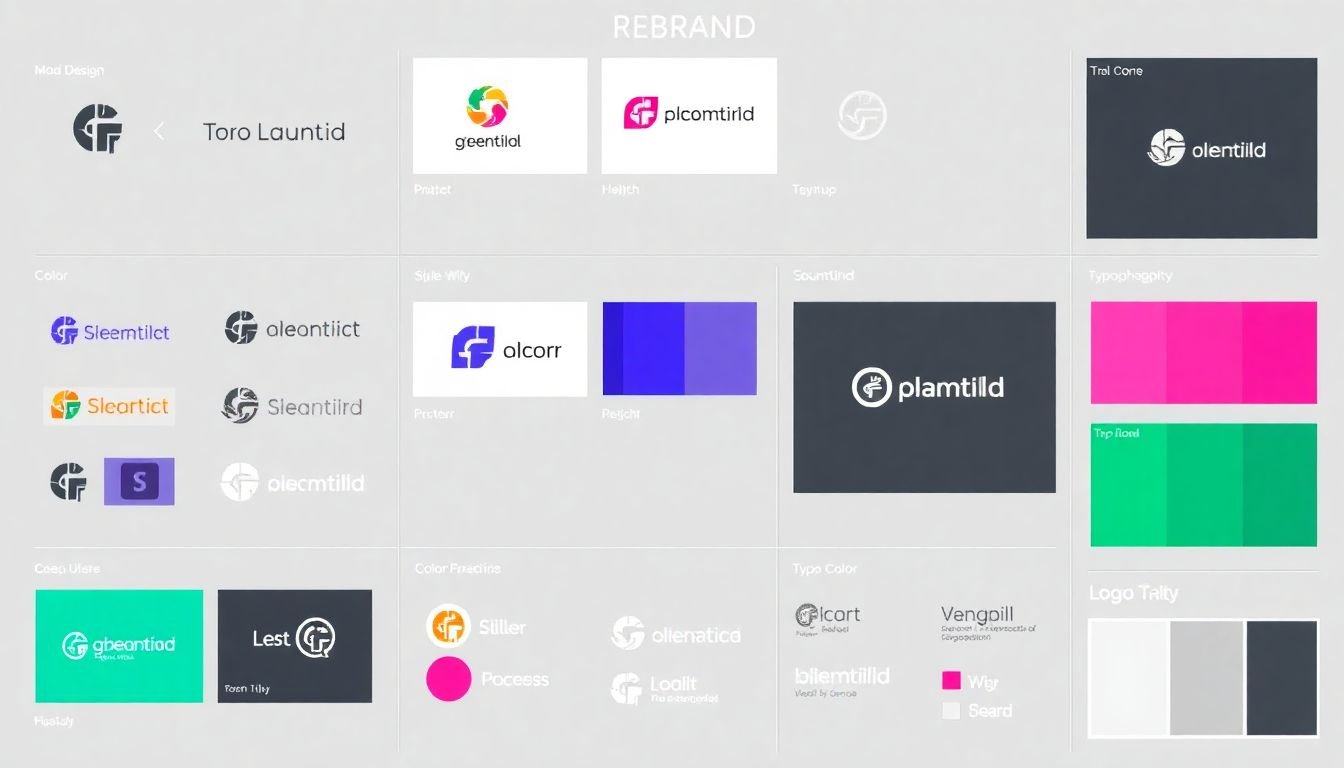
Design: The Visual Identity of Your Rebrand
Embarking on a rebranding journey is an exciting opportunity to refresh your business’s visual identity. Central to this process is the design aspect, which encompasses several key elements that will shape your new brand’s image. Let’s delve into these components and explore the costs associated with each approach.
Logo Design: The logo is the face of your brand, a visual symbol that represents your company’s values and mission. A well-designed logo should be simple, memorable, and versatile, able to adapt to various mediums and platforms. When considering a logo redesign, you might wonder about the costs. Hiring a professional design agency can range from $3,000 to $50,000 or more, depending on the agency’s size, experience, and the project’s complexity. Freelancers, on the other hand, can offer more affordable options, with prices typically ranging from $500 to $5,000.
Color Scheme: Colors play a significant role in branding, evoking emotions and conveying messages. A professional designer will help you choose a color scheme that aligns with your brand’s personality and resonates with your target audience. The cost of a professional color scheme is usually included in the overall design project fee.
Typography: The fonts you use in your branding communicate a lot about your brand’s personality. A professional designer can help you select fonts that are legible, versatile, and on-brand. The cost of typography is typically bundled with the overall design project fee.
Imagery: High-quality, on-brand imagery is crucial for creating a strong visual identity. A professional designer can help you source or create images that align with your brand’s aesthetic and values. The cost of imagery can vary greatly, from stock photos to custom illustrations or photography.
DIY Design: With the abundance of design tools and resources available online, it’s tempting to consider a DIY approach. While this can be cost-effective, it’s important to consider the potential implications. DIY design may save you money, but it could also result in a less polished, less effective visual identity. Moreover, it’s easy to overlook crucial aspects like copyright laws and consistent branding guidelines. If you do choose to go the DIY route, consider using professional design templates or tools, and be prepared to invest time and effort into learning and refining your design skills.
Ultimately, the cost of rebranding will depend on the scope of your project and the route you choose. While hiring a professional design agency or freelancer can be an investment, it’s often worth it for the expertise, time-saving, and potential return on investment. However, if a DIY approach aligns more with your budget and skills, there are certainly ways to create a strong visual identity with the right tools and resources.

Legal Considerations: Protecting Your New Brand
Embarking on a rebranding journey is an exciting time for any business, but it’s crucial to navigate the legal landscape to protect your new brand effectively. The process begins with a comprehensive trademark search to ensure your chosen name, logo, or tagline doesn’t infringe on existing trademarks. This step is not just about avoiding legal disputes; it’s also about building trust with your customers, as a unique brand identity sets you apart in the market.
Once you’ve identified a clear path for your new brand, the next step is to register it as a trademark. This legal process provides several benefits, including nationwide protection, the exclusive right to use the mark in connection with your goods or services, and the ability to enforce your trademark rights against infringers. However, it’s essential to understand that the trademark registration process can take time and comes with associated costs. These fees vary depending on the type of application, the number of classes of goods or services, and whether you’re filing through the U.S. Patent and Trademark Office (USPTO) or hiring a professional.
Hiring a legal professional to assist with your rebranding efforts can significantly streamline the process and provide peace of mind. They can conduct thorough trademark searches, prepare and file your trademark applications, and represent you in any disputes that may arise. While there are costs associated with these services, investing in legal protection is crucial for safeguarding your brand’s value and avoiding costly legal battles down the line. Moreover, a skilled attorney can help you navigate the complex legal landscape, ensuring that your rebranding efforts are not only creative and impactful but also legally sound.
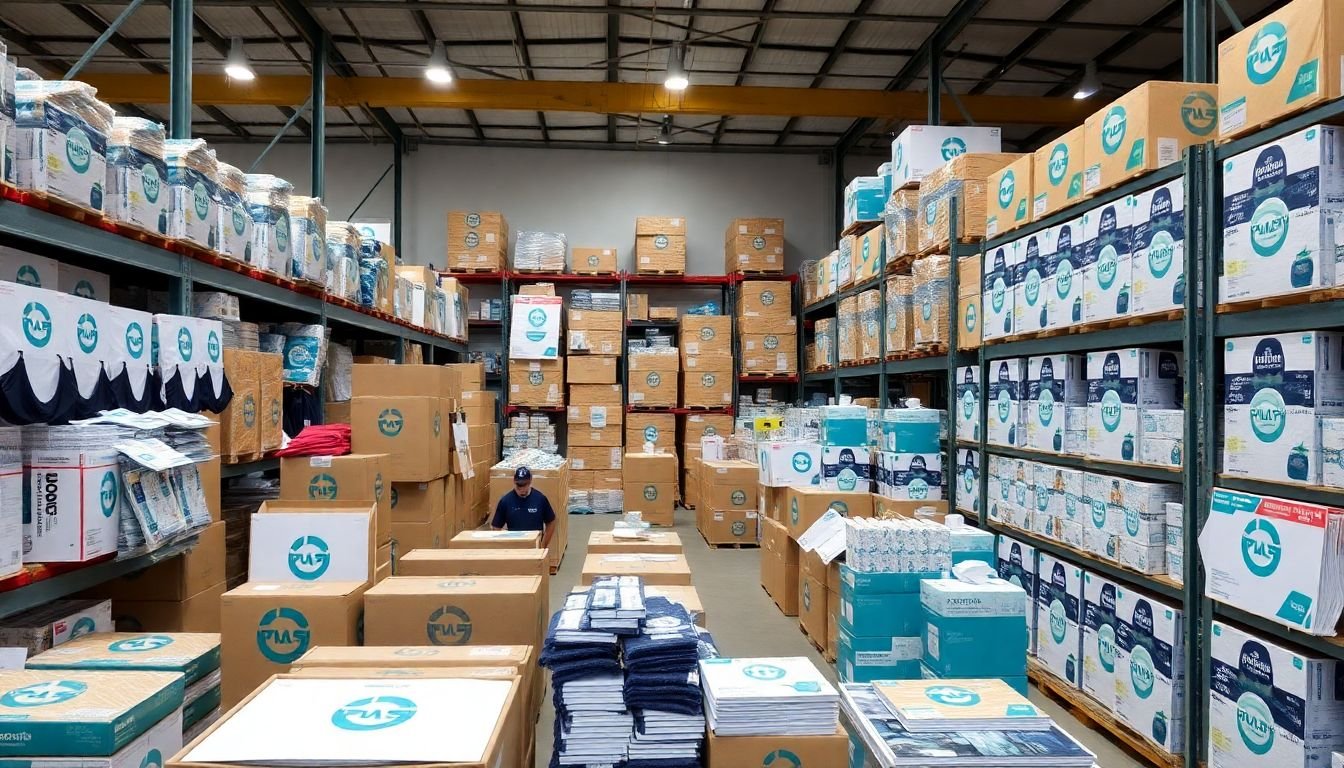
Production and Implementation: Bringing Your New Brand to Life
Embarking on a rebranding journey is an exciting venture that brings your new brand to life, but it’s crucial to understand the production and implementation costs involved. The process begins with the creation of your new brand identity, which includes logo design, color schemes, and typography. Once finalized, the next step is to apply this new identity across various touchpoints, each with its unique cost implications.
The first significant expense is often printing materials. This includes business cards, letterheads, brochures, and packaging materials. The cost varies depending on the quantity, paper quality, and printing technique. For instance, offset printing is cheaper for large quantities, while digital printing is more cost-effective for smaller quantities. Don’t forget to factor in the cost of storage and distribution.
Next, consider the cost of redesigning your website. This can range from a few thousand dollars to tens of thousands, depending on the complexity of the design, the number of pages, and whether you need e-commerce functionality. If you’re using a template, the cost will be lower, but a custom design will increase the price. You’ll also need to factor in the cost of content creation or migration, SEO, and testing.
Updating marketing collateral is another significant cost. This includes advertising materials, promotional items, and signage. The cost varies greatly depending on the type of collateral and the quantity. For example, printing new vehicle wraps will be more expensive than updating your social media profiles.
To manage these costs effectively, it’s crucial to implement your rebrand in phases. This approach allows you to spread out the costs over time and ensures that you’re not overwhelmed with expenses all at once. Here’s a suggested phased approach:
- Phase 1: Internal Rollout
- Start by updating your internal communications, such as email signatures, intranet, and internal documents. This helps to build excitement and buy-in from your team.
- Phase 2: Digital Presence
- Update your website, social media profiles, and online advertising. This phase can be done relatively quickly and at a lower cost than print materials.
- Phase 3: External Rollout
- This is the most expensive phase, involving print materials, signage, and promotional items. It’s also the most visible, so it’s important to get it right.
By following this phased approach, you can manage your rebrand implementation costs more effectively and ensure that your new brand is introduced to the world in a controlled and strategic manner.
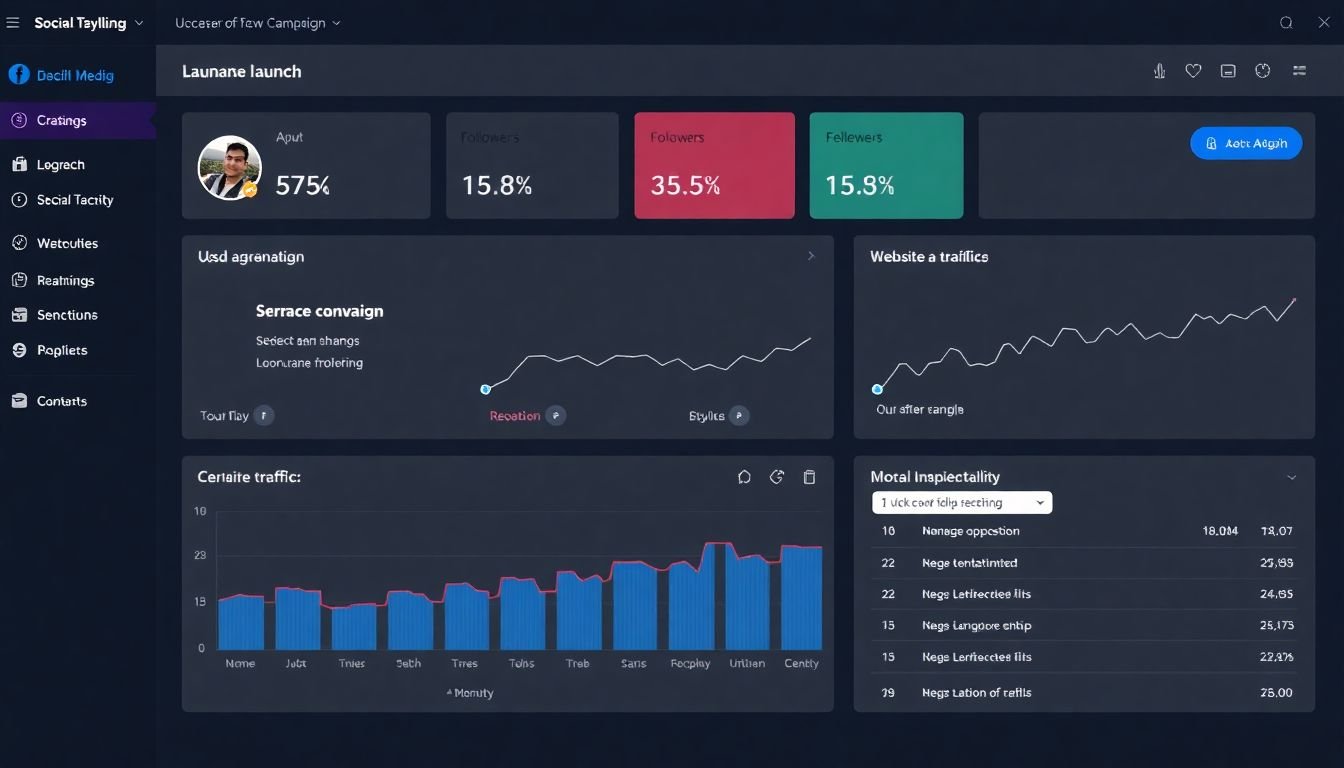
Marketing Investment: Launching Your New Brand
Launching a new brand into the market is an exciting yet daunting task, and a significant part of this journey involves marketing investments. These investments are not merely financial; they are strategic moves to create awareness, generate interest, and establish your brand’s identity. Let’s break down the key marketing costs and their importance in a strong launch strategy.
The first pillar of marketing investment is advertising. This encompasses various channels like television, print, digital, and outdoor media. The cost varies greatly depending on the platform, reach, and frequency. For instance, a 30-second Super Bowl ad can cost upwards of $5 million, while a targeted Facebook ad campaign might only set you back a few thousand dollars. Despite the variation, advertising is crucial for reaching a broad audience and creating immediate brand awareness.
Public relations (PR) is another vital aspect of a new brand’s marketing strategy. PR costs can include hiring an agency, event sponsorships, and influencer partnerships. A well-executed PR campaign can generate positive press coverage, secure speaking engagements, and foster relationships with industry leaders and influencers. This can significantly enhance your brand’s credibility and reach.
Social media campaigns are a cost-effective way to engage with your target audience and build a community around your brand. The costs here can range from the platform’s advertising fees to the salary of a dedicated social media manager. A strong social media presence can humanize your brand, provide customer service, and drive traffic to your website.
To maximize the impact of these investments, a strong launch strategy is indispensable. This involves careful planning, coordination, and timing of your advertising, PR, and social media campaigns. Here are some steps to consider:
- Define your target audience and understand their preferences and behaviors.
- Develop a compelling brand story and messaging that resonates with your audience.
- Create a launch timeline that sequences your marketing activities for maximum impact.
- Measure and analyze the performance of your campaigns to optimize future marketing investments.
In conclusion, launching a new brand requires a multi-faceted marketing approach that combines advertising, public relations, and social media campaigns. Each of these investments plays a critical role in establishing your brand’s identity, reaching your target audience, and driving growth. A well-planned launch strategy ensures that these investments are not just financial, but also strategic steps towards building a successful brand.

Employee Training and Internal Communication: Your Brand’s Greatest Asset
In the dynamic world of business, rebranding can be a powerful tool to refresh a company’s image, reach new audiences, and drive growth. However, a rebrand is more than just a new logo or color scheme; it’s a holistic transformation that requires every employee to be on board. This is where employee training and internal communication step into the spotlight, becoming your brand’s greatest asset.
Firstly, employee training ensures that your team understands the ‘why’ behind the rebrand. They need to grasp the new vision, mission, and values, and how these translate into their day-to-day roles. This isn’t just about learning new branding guidelines; it’s about fostering a cultural shift. Training helps employees understand how the rebrand will impact their work, how they can contribute to its success, and how they’ll be supported throughout the process.
Internal communication plays a pivotal role in keeping employees informed, engaged, and aligned. It’s about more than just announcing the rebrand; it’s about creating a dialogue. Regular updates, Q&A sessions, and feedback opportunities help employees feel involved and valued. This can significantly boost morale and commitment, which can translate into better customer service and increased productivity.
Now, let’s address the elephant in the room: cost. Yes, investing in employee training and internal communication can involve significant expenditure. There are direct costs, such as training materials, workshops, and communication channels. But there are also indirect costs, like the time spent on planning and executing these efforts. However, it’s crucial to view these costs as investments, not expenses.
Here’s why: A successful rebrand requires every employee to be an ambassador, living and breathing the new brand. If they’re not on board, the rebrand will fall flat. Poor communication and lack of training can lead to confusion, resistance, and even sabotage. On the other hand, well-trained, engaged employees can drive the rebrand forward, ensuring it’s authentic, consistent, and successful.
Moreover, effective employee training and internal communication can yield long-term benefits beyond the rebrand. They can enhance company culture, improve employee skills, and boost overall performance. So, while there’s an initial investment, the returns can be substantial.
In conclusion, employee training and internal communication are not just nice-to-haves in a rebranding effort; they’re must-haves. They’re the unsung heroes that can make or break a rebrand. So, when planning your next rebrand, remember to invest in your people. After all, they are your brand’s greatest asset.

Measuring Success: The ROI of Your Rebranding Investment
Embarking on a rebranding journey is a significant investment, both in terms of time and resources. Naturally, you’d want to ensure that this investment yields a substantial return. Measuring the success of a rebranding effort and calculating its return on investment (ROI) is a crucial step in understanding the impact of your rebranding strategy. This process involves tracking key performance indicators (KPIs) that can provide valuable insights into the effectiveness of your rebranding effort.
The first step in measuring the success of your rebranding is to establish a baseline. This involves tracking your current KPIs before the rebranding takes place. Some of the KPIs you might want to consider include brand awareness, customer satisfaction, website traffic, social media engagement, and sales performance.
Once your rebranding is complete, it’s time to start tracking these KPIs again. This will allow you to compare the performance of your brand before and after the rebranding. Here’s how you can use this data:
-
Brand Awareness:
- Track the reach and impressions of your brand’s name, logo, and messaging. An increase in these metrics post-rebranding indicates that your new identity is resonating with your audience.
Customer Satisfaction:
- Use surveys or feedback forms to gauge how your customers feel about your rebranding. A positive response indicates that your rebranding effort has successfully connected with your audience.
Website Traffic:
- Monitor your website’s traffic using tools like Google Analytics. A significant increase in traffic could indicate that your rebranding has improved your online visibility.
Social Media Engagement:
- Track the engagement (likes, shares, comments) on your social media platforms. An increase in engagement suggests that your audience is more interested in your brand post-rebranding.
Sales Performance:
Ultimately, the success of your rebranding should translate into increased sales. Track your sales performance to see if your rebranding has had a positive impact on your bottom line.
To calculate the ROI of your rebranding, subtract the total cost of the rebranding from the total revenue generated as a result of the rebranding. Then, divide the result by the total cost of the rebranding. This will give you a percentage that represents the return on your investment.
Remember, measuring success isn’t just about the numbers. It’s also about understanding the qualitative aspects of your rebranding. This could involve gathering feedback from your customers, employees, and other stakeholders. Their insights can provide a deeper understanding of how your rebranding is being perceived and can inform your future marketing strategies.
FAQ
What are the primary rebranding costs I should budget for?
How much should I allocate for a brand refresh budget?
What are some hidden costs I might not have considered?
How can I ensure I’m getting a good return on my marketing investment?
What is the role of market research in a rebranding project?
How can I manage the risk of a rebranding project?
- Conducting a comprehensive brand audit to understand your current brand’s strengths and weaknesses.
- Developing a detailed project plan with clear timelines, milestones, and responsibilities.
- Building a cross-functional team with representatives from various departments to ensure all perspectives are considered.
- Testing your new brand with a small focus group or pilot program before rolling it out to the entire organization.
- Having a contingency plan in place in case things don’t go as expected.
How can I ensure consistency in my rebranding efforts?
- Develop a comprehensive brand style guide outlining your new brand’s visual identity, tone of voice, and messaging.
- Communicate your rebranding plans and the new brand’s story to your employees to ensure they understand and can effectively represent the new brand.
- Ensure all touchpoints, both online and offline, are updated with your new brand, including your website, social media profiles, marketing materials, and packaging.
- Monitor and enforce brand consistency across all channels to maintain the integrity of your new brand.
How can I measure the success of my rebranding project?
- Brand awareness and reach, such as website traffic, social media followers, and media mentions.
- Customer perception and satisfaction, measured through surveys, reviews, and net promoter scores (NPS).
- Sales performance, including revenue growth, market share, and customer acquisition costs.
- Employee engagement and satisfaction, as a strong brand can positively impact company culture and morale.
Regularly review and analyze these KPIs to assess the impact of your rebranding project and make data-driven decisions to optimize your brand’s performance.
What are some common rebranding mistakes to avoid?
- Not understanding your target audience and their needs, leading to a brand that doesn’t resonate with them.
- Focusing solely on visual elements and neglecting the brand’s strategy, messaging, and values.
- Rushing the rebranding process without adequate planning, leading to inconsistencies and a lack of buy-in from stakeholders.
- Not considering the long-term implications of the rebrand, such as future growth or expansion plans.
- Failing to communicate the rebrand effectively to employees, customers, and other stakeholders, leading to confusion and resistance to change.
By being aware of these common mistakes and taking steps to avoid them, you can increase the likelihood of a successful rebranding project.